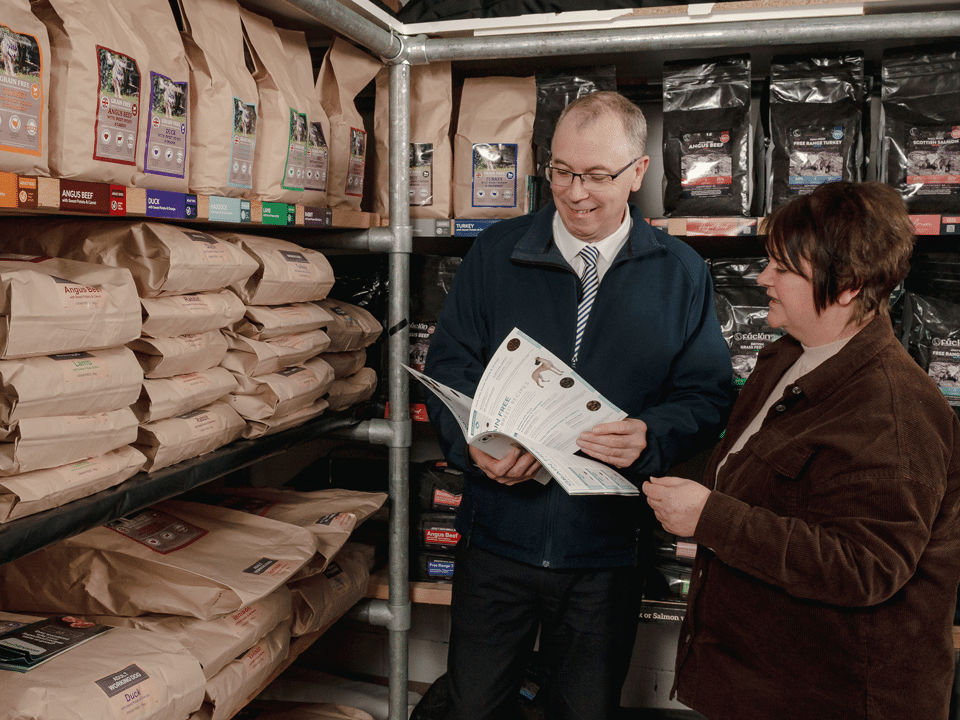
All devoted pet owners want their dogs to be healthy both inside and out. One important factor in achieving this is ensuring that dogs get enough fibre in their diets.
This article explores what fibre is, the different types that dogs require, and the benefits this fantastic ingredient offers for a dog’s health and well-being.
What Is Fibre?
Fibre is one of three types of carbohydrates—the other two being sugars and starches. This essential nutrient helps dogs absorb other nutrients and keeps them feeling fuller for longer, while also promoting the formation of healthy faeces.
Fibre plays a crucial role in maintaining the overall health of the digestive system, yet its importance is often overlooked. It primarily comes from plant cell walls, fruits, and vegetables, with common sources in dog feed including beet pulp, chicory, and legumes.
Types of Fibres
There are two main types of fibre that contribute to a dog’s health: insoluble and soluble.
Insoluble Fibre
Insoluble fibre is not digested and passes through the gut unchanged. Examples include cellulose, hemicelluloses, and lignins. This type of fibre stimulates movement within the large intestine, aiding the formation and passage of faeces and helping to prevent constipation. While a dog’s digestive system usually tolerates high levels of insoluble fibre, too much may potentially lead to constipation or have a laxative effect.
Soluble Fibre
Soluble fibre dissolves in water to form a gel-like substance that acts as a food source for gut bacteria, aiding digestion. Examples of soluble fibre include inulin, fructooligosaccharides, and pectins. Soluble fibre has also been linked to better glycaemic control, which can help maintain steady energy levels.
The Benefits of Fibre in Dog Food
Including fibre in a dog’s diet can improve metabolism and support healthy digestive function. Here are some key benefits:
Aiding Digestion
Fibre is a fantastic resource for the digestive tract. It is typically fermented by the naturally occurring bacteria in the intestine into fatty acids, which the body can then use for energy production. This process not only aids digestion but also supports a healthy gut environment.
Maintaining a Healthy Weight
Fibre can help dogs feel full while consuming fewer calories—a significant benefit given that obesity is a growing concern among vets and pet experts. A recent survey by the PDSA revealed that 52% of veterinary professionals consider obesity to be one of the top five welfare issues in the UK dog population.
Foods that are higher in fibre, such as those found in ‘light’ diets, can be a useful tool in managing a dog’s weight.
Healthy dogs should eat high-quality foods containing both insoluble and soluble fibres to ensure they receive the full spectrum of nutritional benefits. To find out more about the best food choices for your dog, click here.

Emma Hunt
GA Pet Food Partners Pet Nutritionist
Emma has an undergraduate in Animal Behaviour and Welfare and subsequently completed a Masters in Veterinary Public Health at the University of Glasgow. Following this, she worked in the agri-food industry for several years and kept her own sheep flock before joining GA in 2021. Emma enjoys training and competing in strong woman, or spending time with her much-loved collie Lincoln.
You may also like...
Article written by Emma Hunt
The Pros and Cons of AI in Pet Retail
You may have frequently encountered the term “AI” or “AI technology” in the media. From unlocking your phone using Face ID, asking for directions on your [...]




